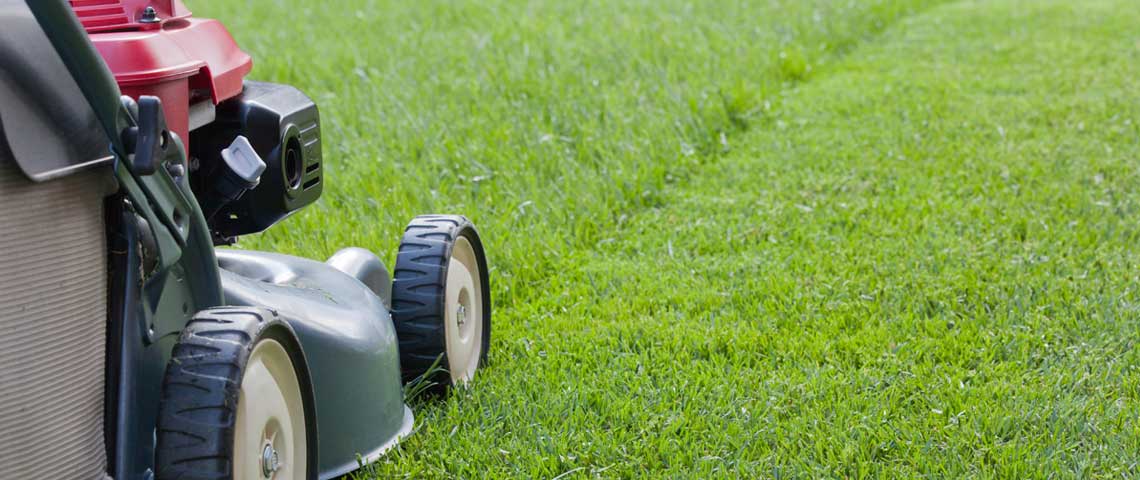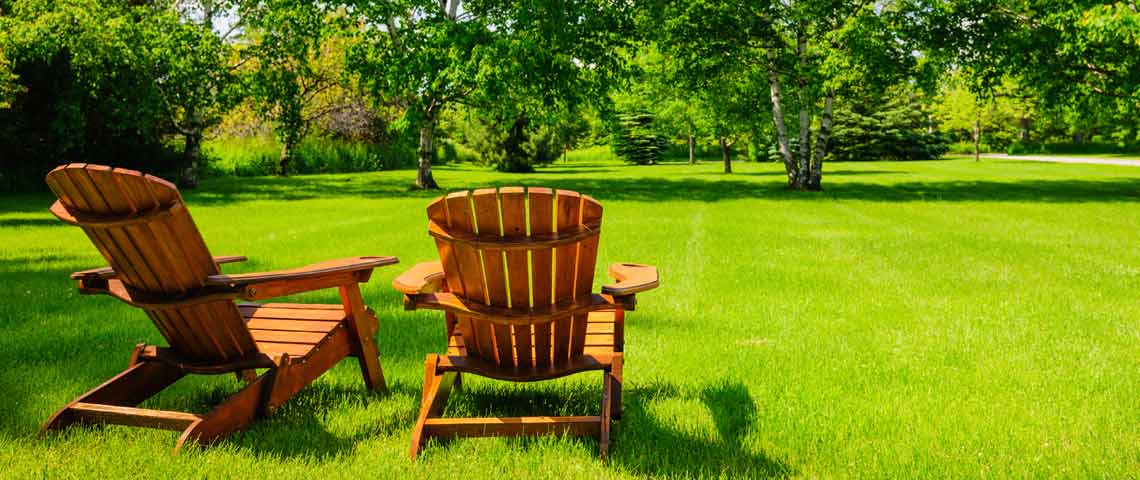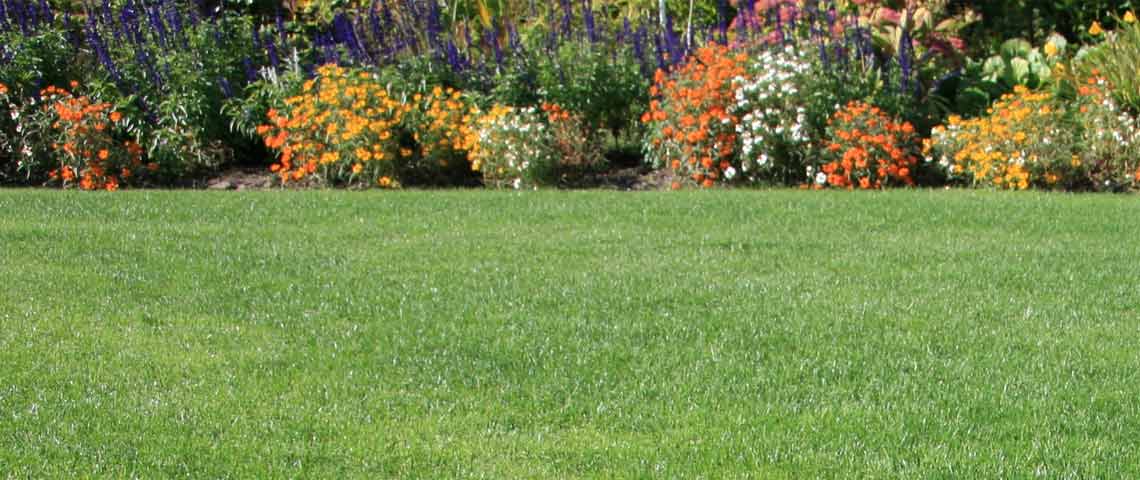How to Mow Your Lawn
Knowing how to mow a lawn can make the difference between a lawn that you're proud of and one that looks weak and stressed. Proper mowing leaves your lawn looking finished and attractive, and it promotes thick, lush growth. On the other hand, improper mowing makes your lawn more susceptible to environmental stresses such as heat and drought.
These lawn mowing tips can help you have the best-looking lawn on the block:
- How to Choose the Ideal Mower
- When to Mow and How Much to Cut
- How Tall to Mow Your Grass Type
- How to Maintain Your Mower and Your Grass
How to Choose the Ideal Mower
Choosing the right lawn mower for the job provides a smooth, clean cut, and makes the most of your mowing time. Choose from these common lawn mower types:
- Manual reel mower – Environmentally friendly and quiet, manual push mowers rely on your strength and energy to mow. They're a good choice for small, flat lawns.
- Electric mower – Available in corded and cordless models, electric lawn mowers are less noisy than gas mowers and great for small yards. Corded mowers stay plugged into electrical outlets as you mow. Rechargeable cordless models offer more freedom, but they may need a recharge mid-mow.
- Gas-powered push mower – Walk-behind, gas-powered mowers have more power and maneuver more easily than manual and electric types, especially when they're self-propelled. They are ideal for medium-sized lawns.
- Riding mower or lawn tractor – For large or sloped lawns, a riding mower or lawn tractor is the best option, allowing you to get a big job done fast.
- Mulching mower – Designed to chop up grass clippings as you mow, mulching mowers leave small clippings on your lawn. Mulched grass clippings left on healthy lawns add nutrients and encourage beneficial microorganisms in the soil.1
When to Mow and How Much to Cut
While regular mowing is important to a healthy lawn, avoid setting a firm mowing schedule for your grass. Base how often you cut your grass on its growth, not on the day of the week. Weather, the season and your grass type all affect how fast it grows.
As a general rule, maintain established lawns so you never remove more than one-third of the grass blade in a single mowing. Cutting more than that reduces the carbohydrates that support healthy grass growth. Remove too much at once, and your lawn becomes more vulnerable to stress from weather, insect pests, diseases and weeds.2 Always mow when grass is dry; wet grass clumps and won't cut evenly.
Proper mowing height for established lawns is especially important during summer months. During periods of warm weather, opt for the higher mowing heights to help shade grass roots and support deep root growth. Gradually lower your mower blades back to normal mowing heights as temperatures cool. Stop mowing your lawn in fall when your grass stops growing.
Guidelines for when to mow a new lawn after seeding or when to mow new sod are different than for established lawns. Newly seeded lawns may take one to two months of establishment before they're ready for mowing. Wait to mow new grass until all of the seed has sprouted and it reaches one and one-half times its recommended height. Start mowing new sod about two weeks after it is laid.

Use the following chart to determine grass height ranges and mower settings for specific grass types. 2, 3, 4, 5 If your lawn grass should be kept at 2 inches high, for instance, set your mower to that height and mow when it reaches a height of 3 inches.
How Tall to Mow Your Grass Type

How to Maintain Your Mower and Your Grass
Proper maintenance of your mower and your grass help keep your fresh-cut lawn thick and healthy. These maintenance basics help ensure your lawn always looks its best:
- Sharpen mower blades. Sharpen mower blades whenever they grow dull. Do at least one thorough or professional sharpening before the mowing season begins each year. Dull blades create ragged cuts that increase the risk of pests and diseases.
- Change lawn mowing patterns. Grass tends to lean in the direction it's mowed. Encourage upright, even growth by mowing in different directions each time you mow. Lawn pros may mow diagonally one time and in straight stripes the next. Choose any lawn mowing patterns you like, just switch it up each time.
- Feed your lawn after mowing. Wait until after mowing to fertilize your grass with high-quality lawn foods such as Pennington Full Season Lawn Fertilizer 32-0-5, so you don't dislodge fertilizer as you mow. With this easy-to-use, premium fertilizer, just one application covers the whole season.
- Avoid over-fertilizing. Fertilizing too often or using too much can burn grass or lead to thatch buildup—that thick, brown layer where grass stems meet roots. That means dethatching your lawn and more work for you.3

A properly mowed lawn looks beautiful and feels great underneath your feet. By following these lawn mowing tips, you can help your lawn grow thick, lush and green. Pennington is here to help you grow the lawn of your dreams.
Pennington is a registered trademarks of Pennington Seed, Inc.
Sources:
1. C.R. Wilson and T. Koski, "Eliminate Grass Clipping Collection," Colorado State University Extension, March 2014.
2. M. Jones, et. al, "Mowing Your Lawn," Iowa State University Extension, August 2009.
3. T. Koski and V. Skinner, "Lawn Care," Colorado State University Extension, March 2012.




